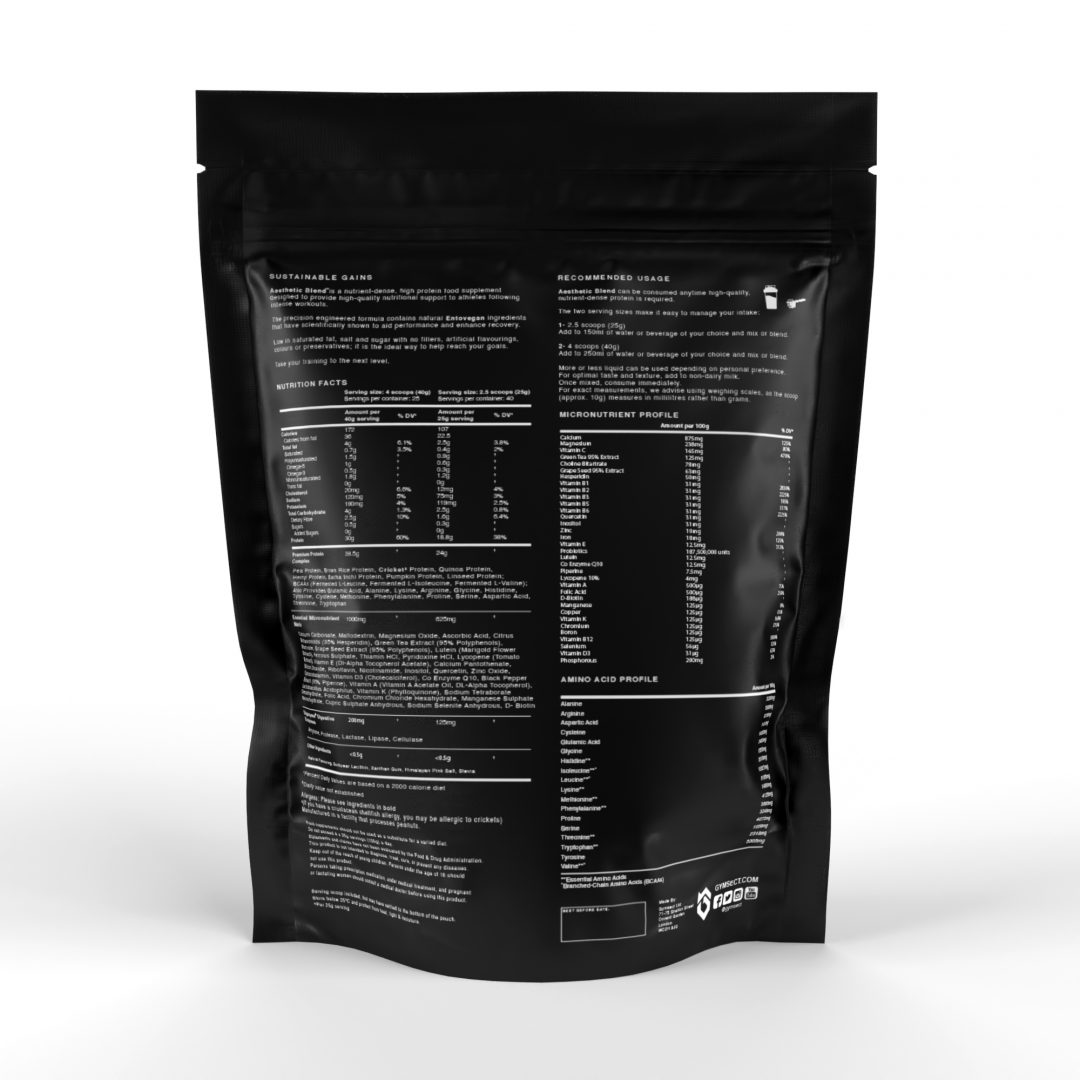Protein supplements are essential for muscle recovery, growth, and overall nutritional balance in health and fitness. Among the plethora of protein options, cricket protein is emerging as a formidable competitor to the traditional whey protein. Let us delve into the benefits of cricket protein vs whey protein, supported by scientific evidence, to inform and guide you towards making healthier and more environmentally friendly choices.
GYMSECT YOUTUBE
Subscribe to our YouTube channel for more valuable insights!
The Nutritional Edge of Cricket Protein
Cricket protein powder is not just another protein supplement; it’s a 100% natural whole food that undergoes minimal processing. This factor alone preserves its nutritional integrity, making it a superior option. Unlike whey protein, which is derived from the by-products of cheese production, cricket protein maintains all the benefits of its original form, offering a complete, bioavailable source of protein that’s also rich in essential micronutrients and fats absent in whey.
Comprehensive Nutritional Comparison
Here’s a detailed comparison per 40g serving highlighting the nutritional superiority of cricket protein over whey:
- Sugar Content: Cricket protein contains 0g of sugar, whereas whey protein has about 2.5g.
- Carbohydrates: At 1.5g of carbs, cricket protein has half the amount found in whey.
- Fibre: Cricket protein provides more than double the fibre content compared to whey.
- Omega-3 and Omega-6 Fatty Acids: Present in abundance in cricket protein, these essential fats are non-existent in whey.
- Iron: Cricket protein boasts 6 times more iron than whey.
- Vitamin B12: An astonishing 800% more B12 is found in cricket protein.
These nutritional advantages make cricket protein a clear winner, offering benefits that extend beyond mere protein content to include essential nutrients crucial for overall health.

Environmental Sustainability
One of the most compelling arguments for choosing cricket protein vs whey protein is its minimal environmental footprint. Cricket farming requires a fraction of the resources needed for dairy farming, which is the source of whey protein. Consider the following:
- Resource Efficiency: It takes 327 kilograms of milk to produce just 2 kilograms of whey protein. In contrast, cricket protein production is significantly more resource-efficient.
- Environmental Impact: Cricket farming has a negligible impact compared to the substantial environmental degradation caused by dairy farming, including water pollution and greenhouse gas emissions.
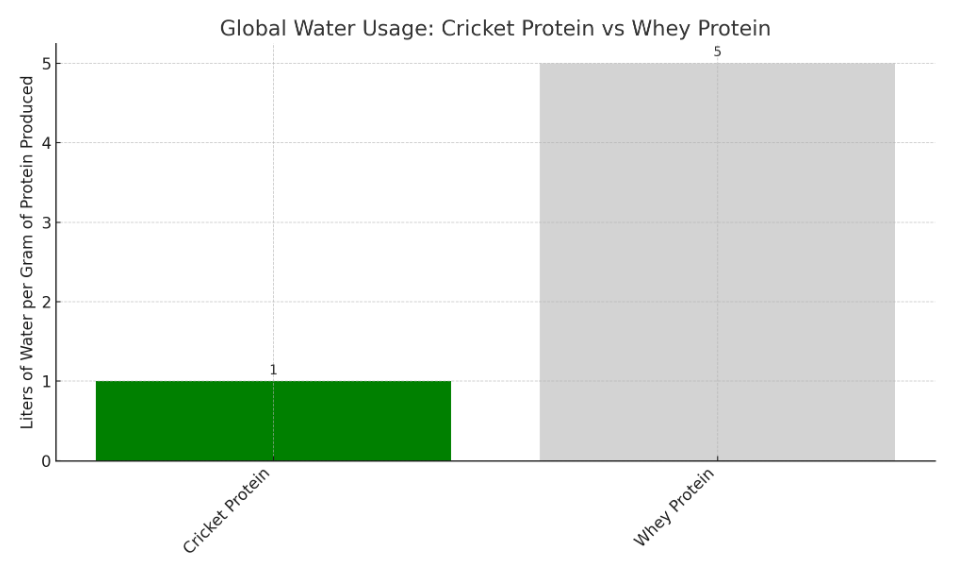
The Global Water Usage chart compares the water required to produce cricket protein vs whey protein, measured in litres per gram of protein produced. This visual representation underscores the sustainability benefits of cricket protein, which requires significantly less water—only 1 litre per gram of protein produced—compared to whey protein’s 5 litres per gram. This chart highlights cricket protein as a more environmentally friendly option, emphasizing its lower water usage and supporting the argument for cricket protein’s advantages in terms of sustainability.
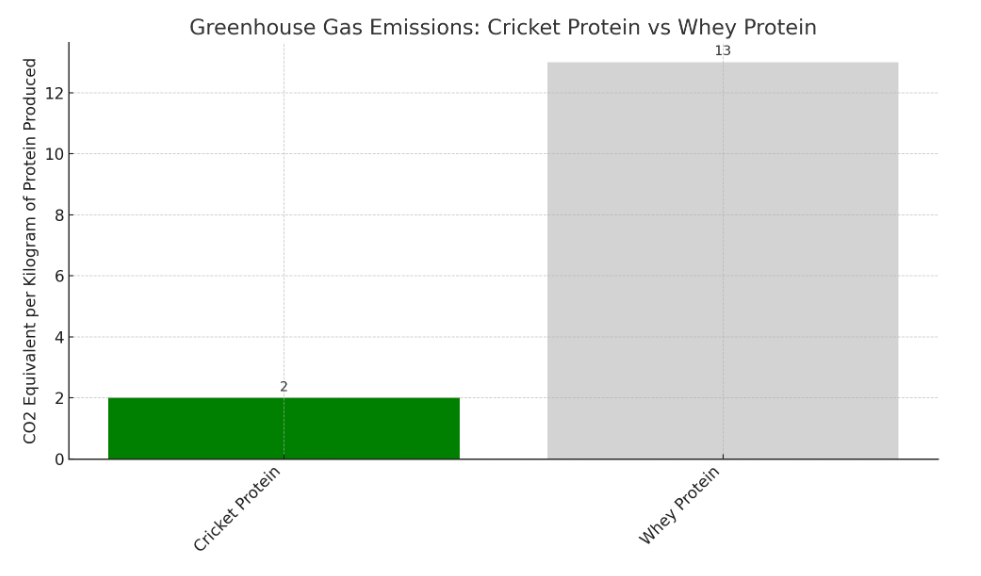
The Greenhouse Gas Emissions chart clearly illustrates the carbon footprint associated with the production of cricket protein vs whey protein, measured in CO2 equivalent per kilogram of protein produced. This comparison highlights cricket protein as a more sustainable choice, with significantly lower greenhouse gas emissions (2 CO2e/kg) than whey protein (13 CO2e/kg). This visual evidence further emphasizes the environmental advantages of cricket protein, showcasing its role in reducing the carbon footprint associated with dietary protein sources.
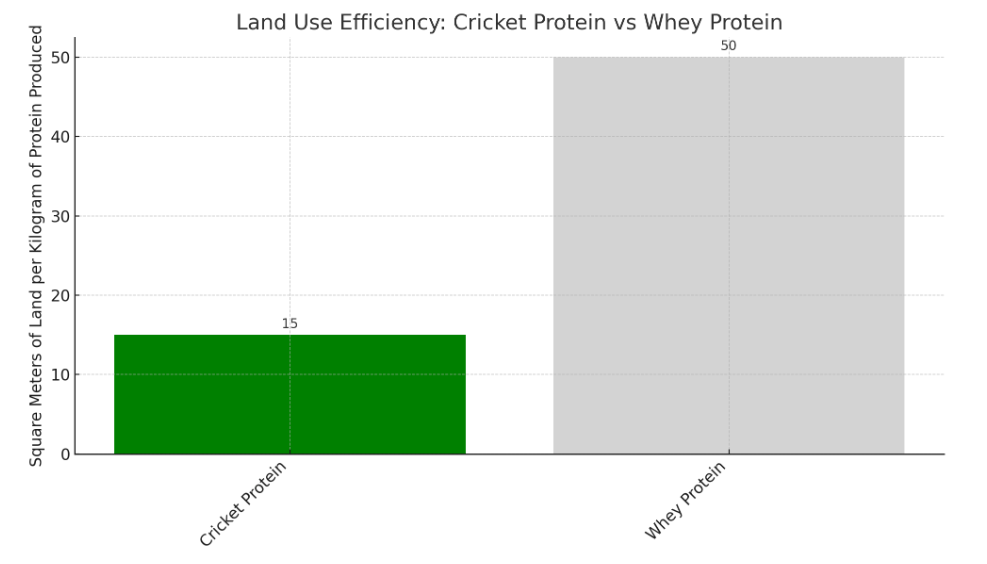
The Land Use Efficiency chart provides a comparison of the land required to produce a kilogram of cricket protein vs whey protein. This comparison demonstrates the efficiency of cricket farming, which necessitates only 15 square meters per kilogram of protein produced, in stark contrast to whey protein, which requires 50 square meters. This visual representation supports the argument for cricket protein’s sustainability, showing how it significantly reduces the demand for land in protein production, making it a more land-efficient and environmentally friendly choice.
Health Risks Associated with Whey Protein
The dark side of whey protein encompasses not just its environmental impact but also health concerns. Whey protein is a by-product of cheese production, and its commercial use was born out of a necessity to dispose of what was once considered waste. The heavy processing involved in making whey protein palatable and marketable has been linked to the degradation of its nutritional quality. A study in 2010 revealed that some whey protein brands contained unsafe levels of heavy metals, including arsenic, cadmium, and lead, posing significant health risks.
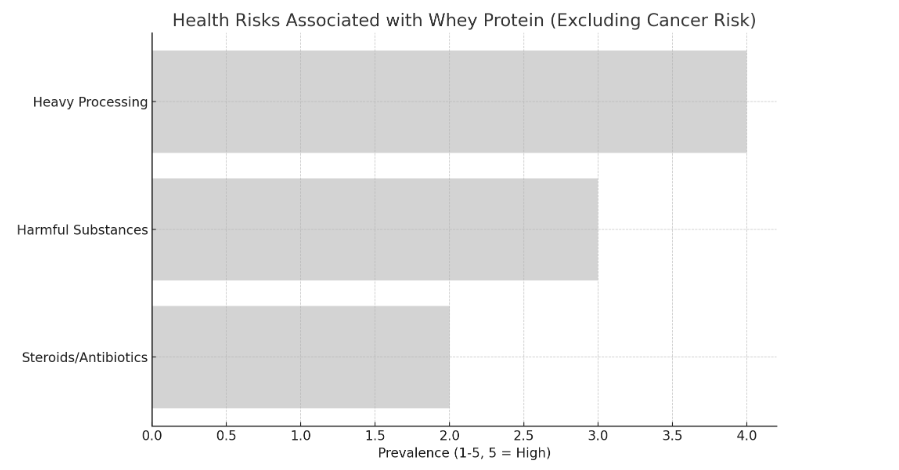
Making the Switch to Cricket Protein
The evidence is clear: cricket protein offers a healthful, environmentally friendly, and nutritionally superior alternative to whey protein. By choosing cricket protein, consumers not only benefit from a high-quality, complete protein source but also contribute to a more sustainable and ethical food system. It’s time to embrace cricket protein as the way forward in nutritional supplements.
Switching to cricket protein is not just a dietary choice; it’s a step towards a healthier lifestyle and a more sustainable future. Embrace the change and experience the myriad benefits that cricket protein has to offer.
learn more about gymsect cricket protein
Curious to learn more about the incredible benefits of cricket protein? Explore our FAQs page to find answers to your questions and discover why cricket protein is the sustainable, nutritious choice for a healthier you and greener planet.
learn more



